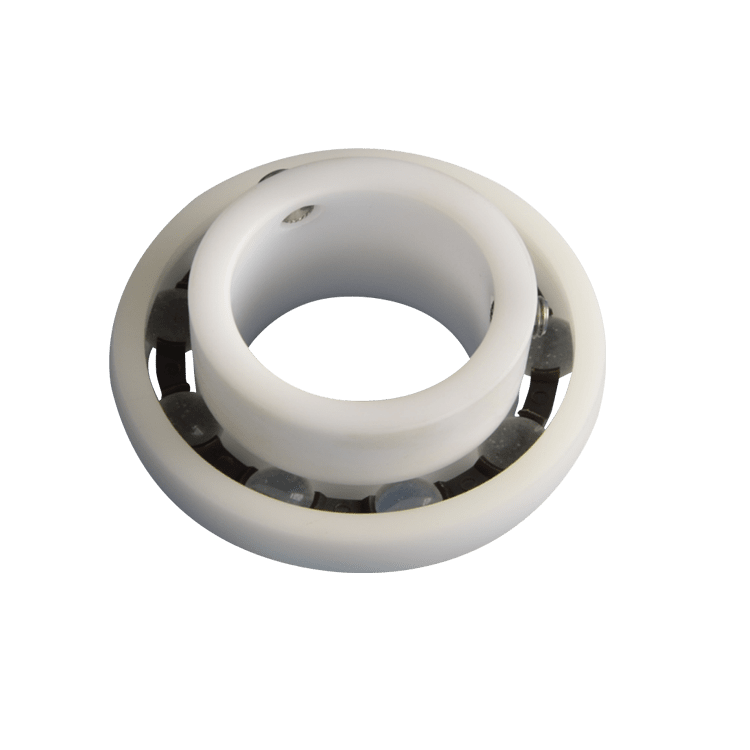Welcome to Tarso, professional special bearing manufacturer
When most individuals think of ceramic bearing products […]
When most individuals think of ceramic bearing products, they're usually talking about full ceramic bearing sets. Full ceramic bearing sets include the complete bearing assembly, the cage, the bushing material, and a seal ring. The ceramic ball is what actually compresses against the bearing bush, which in turn compresses the material surrounding the bearing. This combination allows for the bearing to have a very high stiffness factor, which means that they offer a high mechanical advantage and excellent resistance to wear and tear.
Ceramic bearings sit somewhere between steel and rubber on the scale of hardness. Since they're so hard, and because friction adds so much weight to them, ceramic bearings tend to have a low fatigue point and high tensile strength. Because of this, they're very good at resisting impacts, which means that they can take a lot of punishment without wearing down or rusting out quickly. They're also great for high-precision applications where precision is everything, because they're so tightly wound. However, they tend to be weaker at high speeds, which makes them less energy efficient than steel bearings.

Steel, on the other hand, is typically made up of several different types of metal alloys. Each type of metal tends to have a different level of resistance to impact, heat, and wear, which means that they perform differently in extreme operating conditions. In addition, unlike ceramic bearings which have a high tensile strength and high stiffness factor, steel can't be made as small as ceramic bearings could be. This means that steel bearings can't always handle the torque and load that an OEM ceramic bearing fan.
While the two have similarities, there are differences as well. For one thing, steel can't be made in large sizes, which makes them more commonly used in high-load applications. Ceramic materials commonly used for ball bearings are generally smaller in sizes, which mean that they can be used for lower loads. Ceramic bearings, however, also tend to suffer from fatigue issues, which means that they'll need to be serviced more often than their steel counterparts. Steel, on the other hand, has very few fatigue issues and can be made in many different sizes.
Another difference between the two is found in their operation method. Because ceramic bearings are so stiff, they require a great deal of force to get them moving; this comes from how they are designed. Ceramic bearings do best when they're moving under very little or no force at all. That being said, you will still see them in heavy-duty applications where other elements don't really matter (i.e. in heavy-duty industrial motors).
Another difference is found in their material of choice. Steel bearings are typically made from iron or brass, while ceramic bearings tend to be made from either silicon nitride or silicon dioxide. Silicon nitride is a hard metal that has the ability to create high levels of friction without the use of heat, meaning that it's often combined with silicon to create better friction properties. Silicon dioxide tends to be softer and is commonly mixed with silicon to form harder forms of friction.
This difference in construction means that the two types of bearings have slightly different advantages. Silicon nitride and silicon dioxide ceramic ball bearings both provide high levels of torque and superior speed performance, but one type is significantly more resistant to wear and damage than the other. In addition to this, they both have excellent anti-corrosion properties that mean that they don't corrode the way that steel ball bearings do. They also both have the ability to create fewer problems if their shafts encounter rough working environments, such as those that can be found in the oil and gas industry.
Steel ball bearings have long since been the king of racing equipment, but recently there has been an increasing trend towards ceramic bearings. Ceramic bearings tend to outperform their steel cousins because they have a much lower center of gravity. This means that they can be less susceptible to leaning over sideways if the rider has his or her feet placed on the ground. Also, when a racier sits in a race and applies a sudden force to a bearing, the ball tends to roll faster than a similar sized bearing made of steel. However, another advantage to ceramic bearings is that they tend to produce little, if any, noise.